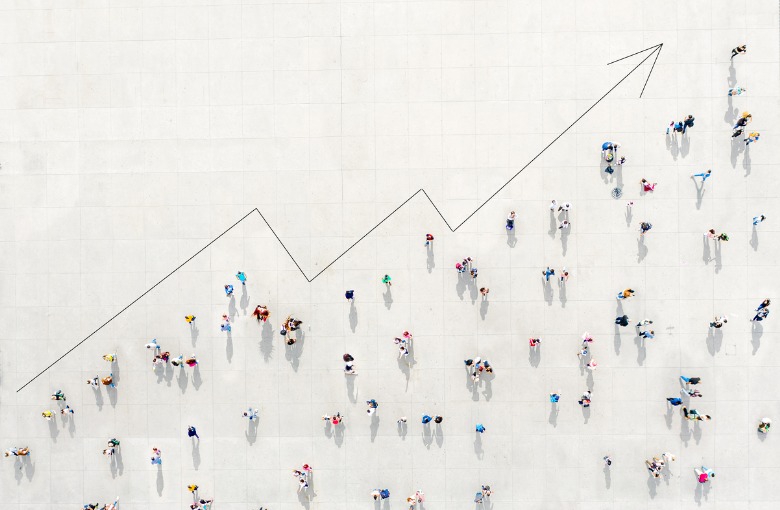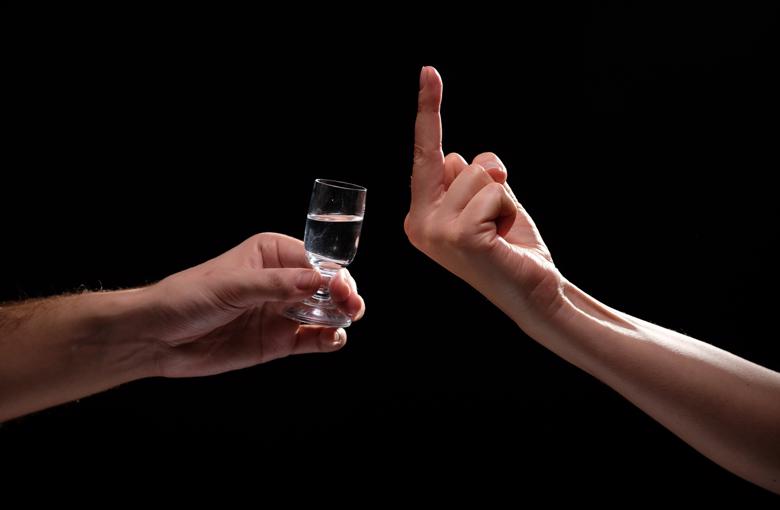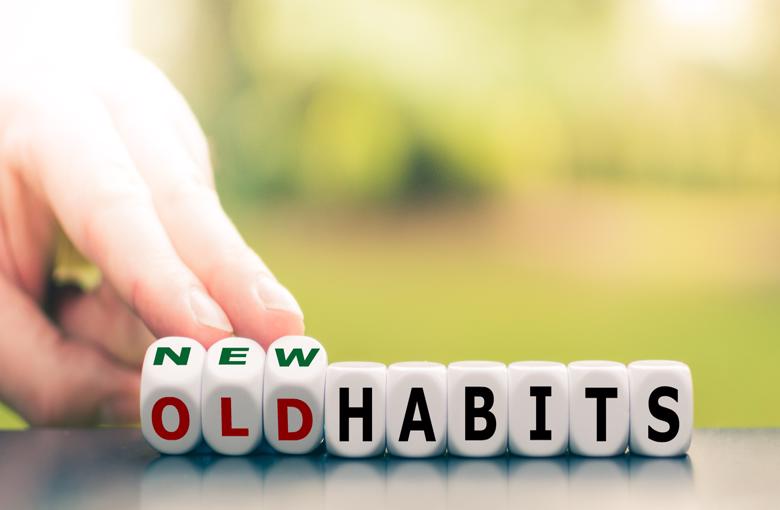“Alcohol is considered the most regularly used addictive substance in the United States.”
– National Council on Alcoholism and Drug Dependence (NCADD).
It is said that 90% of all Americans will use alcohol at some point in their life. 90%!!! And it is basically poison with absolutely no redeeming qualities.
In 2019 alone, alcohol sales topped $252 Billion*. That is not a typo, that’s Billion with a B. I can’t even imagine what the 2020 pandemic sales looked like. I know that everything I saw related to liquor sales was through the roof for 2020 considering it is essential and all… (Statista)
Here is a little history on the disgusting level of marketing that is targeted to youth to get them hooked early. Then, of course, continue to point the gun at them in the form of $BILLIONS IN ADVERTISING spent targeting them to continue to keep them hooked for life. It is very disheartening once you see it for yourself. But now that you know what can you do about it?
Well that is for you to decide.
Let me start with this nonsense:
Marketing and advertising of alcoholic beverages and products in America is regulated under the Federal Alcohol Administration Act (FAA) administered by the Tobacco Tax and Trade Bureau (TTB), which is hosted by the Department of the Treasury. Seems legit, right? [sarcasm] Nothing to see here…
Do you want to see an email address that has never been used? market.compliance@ttb.gov
The Federal Alcohol Administration Act does not require alcohol beverage advertisements to be approved prior to appearing in print or broadcast. TTB does however, offer industry members, free of charge, a voluntary advertising pre-clearance service. To submit an advertisement for pre-clearance review, you may email it to market.compliance@ttb.gov but it is not required.
Look, I am not here to fight the system. There is way too much money involved for that. I am just pointing out that the system is set up for money and definitely not you and certainly not for our youths’ best interest.
If I didn’t have the link to the information that is below I wouldn’t believe it myself. The fact that this page exists makes it pretty clear that they are only looking out for one thing and it’s not the best interest of the public. It’s all very sad 🙁
Let me give you the highlights:
The Federal Alcohol Administration Act does not require alcohol beverage advertisements to be approved prior to appearing in print or broadcast.
“The Market Compliance Office sees a wide range of mistakes when reviewing alcohol beverage advertisements.”
*(WTF-ing F! Despite the fact that they “see a wide range of mistakes”, the Federal Government a.k.a. The collectors of Alcohol Tax Revenue, still feel that there is no need to require liquor companies to submit their ad copy prior to releasing it to the public. You can’t make this stuff up).
Common Alcohol Beverage Advertising Mistakes
The Market Compliance Office (MCO) of TTB sees a wide range of mistakes when reviewing alcohol beverage advertisements of our regulated industry members. We would like to share with you some of the most common mistakes we find.
- Mandatory statements are missing, such as:
- the name and address of the responsible advertiser
- the alcohol content (percent alcohol by volume) of distilled spirits
- False or misleading health claims or health-related statements are made, such as:
- “will improve memory”
- “no headaches”
- “provides energy”
- Statements that create a misleading impression about the identity, origin, or other characteristics of the product.
- A product label depicted on a bottle in the advertisement is not a reproduction of the approved label.
- A calorie or carbohydrate claim is made but no statement of average analysis appears on the website.
*The Federal Trade Commission, Self-Regulation in the Alcohol Industry is the standard. Yep it’s exactly what it says. To this day the Federal Government lets the alcohol companies “Self-Regulate” their own advertising. Apparently there isn’t enough tax revenue from the $252B in sales to appoint an actual committee to regulate it full time. Perplexing and extremely sad.
If you are paying attention you will see a trend where our Federal governing bodies that are set up to “protect” us do no such thing. Sadly, when I say ‘paying attention’ all you need to do is actually take a look at what is right there in front of you but no one does. Yet everyone’s got time to scroll social media…
Hopefully you are starting to see why we are set up to fail. It should start to be pretty obvious by now. Just follow the money and it will all become very clear.
It is honestly reprehensible and disgusting how kids are targeted. Why do you think you see so many musicians, rappers and other celebrities that the younger generation likes, worships and idolizes in these alcohol advertisements?
Let me be clear: I believe in free market capitalism so I can’t even blame the for-profit alcohol companies for doing it. They are in business to make money and what they are doing is perfectly legal since the US Government allows it.
Random side note that I will get into in another post: did you know the US and New Zealand are the only 2 countries in the world that allow Pharmaceutical Companies to advertise prescription drugs at all? This was legalized in 1985 but really took off in 1997 when the (not your friend) Food and Drug Administration (FDA) eased regulations to allow it.
What bothers me is that these governing bodies are supposed to be set up to protect the people from unscrupulous business practices yet they literally endorse it. In fact, if they do violate any of these laws all they have to do is pay the government a fine to make it all go away. This is a cycle you will see in virtually every sector of business that exists.
Make a false or misleading claim- no problem; pay us a fine and please don’t do it again but if you do it’s no problem, just pay us another fine and you’re good. Nothing to see here…
This is why when reading the results of any survey or research study you need to make sure you fully understand a few things: who conducted it and why. Then most importantly- who funded it.
Want to know something extremely disturbing? Like everything you may or may not want to know the truth about, if you follow the money you will always find out what you need to know. Good or bad.
Here is a blatant example of some of these shenanigans. In this article published by the New York Times, they allege that a research study performed by the National Institute on Alcohol Abuse and Alcoholism, part of National Institute of Health (N.I.H), was funded by 5 major Alcohol companies.
So what was this $100 million research study on? To enshrine alcohol as part of a healthy diet.
Wait, what?
For the record, the National Institute on Alcohol Abuse and Alcoholism, part of the National Institute of Health is a Federal Government Program. President Nixon signed the Comprehensive Alcohol Abuse and Alcoholism Prevention, Treatment, and Rehabilitation Act of 1970 on December 31, 1970.
So why would the federal Government want to put out such a study? Great question.
The article reports that in 2014 two prominent scientists and a senior federal health official from the National Institute of Health pitched to a room full of liquor company executives at the luxurious Breakers Hotel in Palm Beach, Fla. to obtain $100 Million in funding for the 10 year study.
Do you think they were receptive?
Of course they were. Anheuser Busch, InBev, Heineken and other well known alcohol companies were all funding most of the study through donations to a private foundation that raises money for the National Institute of Health.
Come again?
So let me get this straight- alcohol companies are funding the research into the effects of a daily drink as part of a healthy diet through a private fund that raises money for the National Institute of Health.
Seems legit right?
The most dumbfounding part of the article: the researchers behind the study reportedly persuaded alcohol industry executives to fund them by citing that the trial “represents a unique opportunity to show that moderate alcohol consumption is safe and lowers risk of common diseases” — before they had even had one patient.
I mean, you can’t make this stuff up.
The study “is not public health research — it’s marketing,” Michael Siegel, a professor of community health sciences at Boston University School of Public Health told Times reporter Roni Caryn Rabin.
So why would the National Institute on Alcohol Abuse and Alcoholism, part of the National Institute of Health be conducting a marketing research study to help increase the alcohol sales funded by the alcohol industry? Unreal! The study was shut down shortly after it was started (because of the NYT article). Investigators also found that officials at the alcohol institute “hid facts” from other staff and from the foundation that funded the study.
And if you think that is bad, take a look at this study.
Researchers from Dartmouth Medical School followed more than 5,000 Vermont and New Hampshire students ages 10 to 14 for 13 to 26 months, and found that those with higher exposure to movie alcohol use at the initial assessment were more likely to have started drinking at time of follow-up. They also found depictions of alcohol use in 92% of 601 contemporary movies, including in 52% of G-rated films.
*Source: J. D. Sargent, T. A. Wills, M. Stoolmiller, J. Gibson, and F. X. Gibbons, “Alcohol Use in Motion Pictures and Its Relation with Early-Onset Teen Drinking,” Journal of Studies on Alcohol 67 (2006): 54-65.
Why would a G-rated film ever show the use of alcohol? I mean at all?
You can see this is not a new problem. This has been going on for a long long time.
I could go on and on with evidence of how we are set up to fail. Then add in those of us with addiction predispositions and addictive personalities and we never stand a chance. How and why you got there is definitely not your fault but now that you know you’ve been targeted your whole life, it’s a choice to continue down the path. You can stop whenever you want.
I will leave you with this study below…a little research can go a long way and it doesn’t take long to do it.
“Anything worth doing isn’t easy and anything easy isn’t worth doing.”
Never stop growing. Ever.
JH
Here is a study that should disgust you from the ‘John Hopkins Center On Marketing Alcohol and Youth’:
Alcohol Advertising and Youth
Research clearly indicates that, in addition to parents and peers, alcohol advertising and marketing have a significant impact on youth decisions to drink.
“While many factors may influence an underage person’s drinking decisions, including among other things parents, peers and the media, there is reason to believe that advertising also plays a role.” (Federal Trade Commission, Self-Regulation in the Alcohol Industry, 1999)1
Parents and peers have a large impact on youth decisions to drink. However, research clearly indicates that alcohol advertising and marketing also have a significant effect by influencing youth and adult expectations and attitudes and helping to create an environment that promotes underage drinking.
EVIDENCE FROM LONG-TERM STUDIES
- A national study published in January 2006 concluded that greater exposure to alcohol advertising contributes to an increase in drinking among underage youth. Specifically, for each additional ad a young person saw (above the monthly youth average of 23), he or she drank 1% more. For each additional dollar per capita spent on alcohol advertising in a local market (above the national average of $6.80 per capita), young people drank 3% more.2
- Another study found that, among a group of 2,250 middle-school students in Los Angeles, those who viewed more television programs containing alcohol commercials while in the seventh grade were more likely in the eighth grade to drink beer, wine/liquor, or to drink three or more drinks on at least one occasion during the month prior to the follow-up survey.3
- Researchers followed 3,111 students in South Dakota from seventh to ninth grade, and found that exposure to in-store beer displays in grade 7 predicted onset of drinking by grade 9, and exposure to magazine advertising for alcohol and to beer concessions at sports or music events predicted frequency of drinking in grade 9.4
- A study of 2,406 never-drinking New Hampshire middle school students found that ownership of alcohol-branded merchandise at baseline was significantly associated with increased likelihood of having initiated drinking (OR=1.5) at follow-up one to two years later, after adjusting for wide range of confounders.5
- Researchers from Dartmouth Medical School followed more than 5,000 Vermont and New Hampshire students ages 10 to 14 from 13 to 26 months, and found that those with higher exposure to movie alcohol use at the initial assessment were more likely to have started drinking at time of follow-up. They also found depictions of alcohol use in 92% of 601 contemporary movies, including in 52% of G-rated films.6
EVIDENCE FROM STUDIES OF THE EFFECTS OF REDUCTIONS IN ALCOHOL ADVERTISING
- An econometric analysis using data from the National Longitudinal Survey of Youth 1997 estimated that a 28% reduction in alcohol advertising would reduce adolescent monthly alcohol participation from 25% to between 24% and 21%, and would reduce adolescent participation in binge drinking from 12% to between 11% and 8%.7
- An effort to estimate the likely effects of several alcohol policies on youth drinking behavior in the U.S. population concluded that a complete ban on alcohol advertising would be the most effective, resulting in 7,609 fewer deaths from harmful drinking and a 16.4% drop in alcohol-related life-years lost.8
- An analysis of the impact of evidence-based personal and environmental interventions on disability-adjusted life-years (DALYs) in 12 regions of the world found that in regions where heavy drinking is less prevalent, targeted strategies such as brief physician advice, roadside breath testing, and advertising bans would be most effective.9
EVIDENCE OF HOW ALCOHOL ADVERTISING ATTRACTS AND INFLUENCES YOUNG PEOPLE
- A study on the responses of young people to alcohol advertising found that underage youth are drawn to music, animal and people characters, story and humor in alcohol advertising. Ads that were liked by youth in the study were more likely to elicit responses from youth saying they wanted to purchase the brand and products advertised. The three most popular alcohol ads among youth in the study used animal characters as the leading actors.10
- A review of the neuroscience, psychology and marketing literatures concluded that adolescents, because of how the human brain develops, may be particularly attracted to branded products such as alcohol that are associated with risky behavior and that provide, in their view, immediate gratification, thrills and/or social status.11
- If young people like alcohol ads, they are more likely to have positive expectancies about alcohol use and to intend to drink or to drink.12,13
- Exposure to alcohol advertising shapes attitudes and perceptions about alcohol use among both young people (defined in this study as ages 15-20) and young adults (ages 21 to 29). However, these attitudes and perceptions predict young people’s positive expectancies and intentions to drink, but not those of young adults.14
WHAT TEENS AND OTHERS THINK ABOUT ALCOHOL ADVERTISING AND YOUTH
- A USA Today survey found that teens say ads have a greater influence on their desire to drink in general than on their desire to buy a particular brand of alcohol.15
- Eighty percent of general public respondents in a poll by the Bureau of Alcohol, Tobacco and Firearms believed “that alcohol advertising influences youth to drink alcoholic beverages.”16
- Another poll, done for an alcohol-industry-funded organization called the Century Council, found that 73% of the public believes that “alcohol advertising is a major contributor to underage drinking.”17
- The National Association of Broadcasters (NAB) recognizes the influence advertising can have on youth: “[T]he impact of advertising on radio and television audiences, particularly kids, cannot be overstated. Clever jingles, flashy lights, fast-talking, and quick pacing, all contribute to the message of commercials.”18
HOW MUCH ALCOHOL ADVERTISING REACHES YOUTH
- Alcohol advertisers spent $2 billion on alcohol advertising in measured media (television, radio, print, outdoor, major newspapers and Sunday supplements) in 2005.19
- Working from alcohol company documents submitted to them, the Federal Trade Commission estimated in 1999 that the alcohol industry’s total expenditures to promote alcohol (including through sponsorship, Internet advertising, point-of-sale materials, product placement, brand-logoed items and other means) were three or more times its expenditures for measured media advertising.20 This would mean that the alcohol industry spent approximately $6 billion or more on advertising and promotion in 2005.20
- The Center on Alcohol Marketing and Youth at Georgetown University has found that: Between 2001 and 2005, youth exposure to alcohol advertising on television in the U.S. increased by 41%. Much of this increase resulted from the rise in distilled spirits advertising on television from 1,973 ads in 2001 to 46,854 ads in 2005.21
- Youth exposure to alcohol advertising in magazines decreased by 31% between 2001 and 2004. In 2004, more than half of youth exposure to alcohol advertising in magazines came from 22 brands, all of which exposed youth to their advertising more effectively than adults.22
- In a sample of radio advertising for the 25 leading alcohol brands in the summer of 2004, more than two-thirds of youth exposure to alcohol advertising came from ads placed on youth-oriented programming, defined as programming with youth audiences larger than the population of youth ages 12 to 20 in the local market.23
- From 2001 though 2003, youth in the United States were 96 times more likely per capita to see an ad promoting alcohol than an industry ad discouraging underage drinking.24 In fact, compared to underage youth, adults age 21 and over were nearly twice as likely per capita to see advertising discouraging underage drinking.25
- A study of alcohol advertising in magazines from 1997 to 2001 found that the number of beer and distilled spirits ads tended to increase with a magazine’s youth readership. For every 1 million underage readers ages 12-19 in a magazine, researchers found 1.6 times more beer advertisements and 1.3 times more distilled spirits advertisements.26
NOTES
- Federal Trade Commission, Self-Regulation in the Alcohol Industry: A Review of Industry Efforts to Avoid Promoting Alcohol to Underage Consumers (Washington, DC: Federal Trade Commission, 1999), 4.
- L.B. Snyder, F.F. Milici, M. Slater, H. Sun, and Y. Strizhakova, “Effects of Alcohol Advertising Exposure on Drinking Among Youth,” Archives of Pediatrics and Adolescent Medicine 160 (2006): 18-24.
- A.W. Stacy, J.B. Zogg, J.B. Unger, and C.W. Dent, “Exposure to Televised Alcohol Ads and Subsequent Adolescent Alcohol Use,” American Journal of Health Behavior 28, no. 6 (2004): 498-509.
- P.L. Ellickson, R.L.Collins, K.Hambarsoomians, and D.R. McCaffrey, “Does Alcohol Advertising Promote Adolescent Drinking? Results From a Longitudinal Assessment,” Addiction 100 (2005): 235-46.
- A. McClure, S. Dal Cin, J. Gibson, J. D. Sargent, “Ownership of Alcohol-Branded Merchandise and Initiation of Teen Drinking,” American Journal of Preventive Medicine 30 (2006): 277-283.
- J. D. Sargent, T. A. Wills, M. Stoolmiller, J. Gibson, and F. X. Gibbons, “Alcohol Use in Motion Pictures and Its Relation with Early-Onset Teen Drinking,” Journal of Studies on Alcohol 67 (2006): 54-65.
- H. Saffer and D. Dave, “Alcohol advertising and alcohol consumption by adolescents,” Health Economics 15 (2006): 617-637.
- W. Hollingworth, B. E. Ebel, et al., “Prevention of Deaths From Harmful Drinking in the United States: The Potential Effects of Tax Increases and Advertising Bans on Young Drinkers,” Journal of Studies on Alcohol 67 (2006): 300-308.
- D. Chisholm, J. Rehm, et al., “Reducing the global burden of hazardous alcohol use: a comparative cost-effectiveness analysis,” Journal of Studies on Alcohol 65(2004): 782-793.
- M.J. Chen, J.W. Grube, M. Bersamin, E. Waiters, and D.B. Keefe, “Alcohol Advertising: What Makes It Attractive to Youth?,” Journal of Health Communication 10 (2005): 553-565.
- C. Pechmann, L. Levine, et al., “Impulsive and self-conscious: Adolescents’ vulnerability to advertising and promotion,” Journal of Public Policy and Marketing 24(2005): 202-221.
- E.W. Austin and C. Knaus, “Predicting the Potential for Risky Behavior Among Those? Too Young? to Drink as a Result of Appealing Advertising,” Journal of Health Communications 5(2000): 13-27.
- E.W. Austin, B. E. Pinkleton, et al., “The Role of Interpretation Processes and Parental Discussion in the Media’s Effects on Adolescents’ Use of Alcohol,” Pediatrics 105(2000): 343-349.
- K. Fleming, E. Thorson, et al., “Alcohol Advertising Exposure and Perceptions: Links with Alcohol Expectancies and Intentions to Drink or Drinking in Underaged Youth and Young Adults,” Journal of Health Communication 9(2004): 3-29.
- B. Horovitz, M. Wells, “Ads for adult vices big hit with teens,” USA Today (31 January 1997): News 1A.
- Bureau of Alcohol, Tobacco and Firearms, Executive Summary of Findings of Research Study of the Public Opinion Concerning Warning Labels on Containers of Alcoholic Beverages (Washington, DC: BATF, 1988), 14, cited in U.S. Department of Health and Human Services, Office of Inspector General, Youth and Alcohol: Controlling Alcohol Advertising that Appeals to Youth(Washington, DC: Department of Health and Human Services, October 1991), 2.
- Century Council, “Poll shows many people believe industry encourages teen drinking,” Alcohol Issues Insights 8 no. 8 (3 August 1991).
- Cited in U.S. Department of Health and Human Services, Office of Inspector General, Youth and Alcohol: Controlling Alcohol Advertising that Appeals to Youth (1991), 2.
- Nielsen Adviews.
- Federal Trade Commission, Self-Regulation in the Alcohol Industry, Appendix B: Alcohol Advertising Expenditures, iii.
- Center on Alcohol Marketing and Youth, Still Growing After All These Years: Youth Exposure to Alcohol Advertising on Television, 2001?2005 (Washington, D.C., 2006).
- Center on Alcohol Marketing and Youth, Youth Exposure to Alcohol Advertising in Magazines, 2001 to 2004: Good News, Bad News (Washington, D.C., 2006).
- D. H. Jernigan, J. Ostroff, et al., “Youth Exposure to Alcohol Advertising on Radio — United States, June–August 2004,” Morbidity and Mortality Weekly Report 55(2006): 937-940.
- Center on Alcohol Marketing and Youth, Alcohol Industry “Responsibility” Advertising on Television,” (Washington, D.C., 2005).
- Unpublished analysis using TNS Media Intelligence and Nielsen Media Research, 2005.
- C.F. Garfield, P.J. Chung, P.J. Rathouz, “Alcohol Advertising in Magazines and Youth Readership,” The Journal of the American Medical Association 289, no. 18 (May 14, 2003): 2424-2429.









